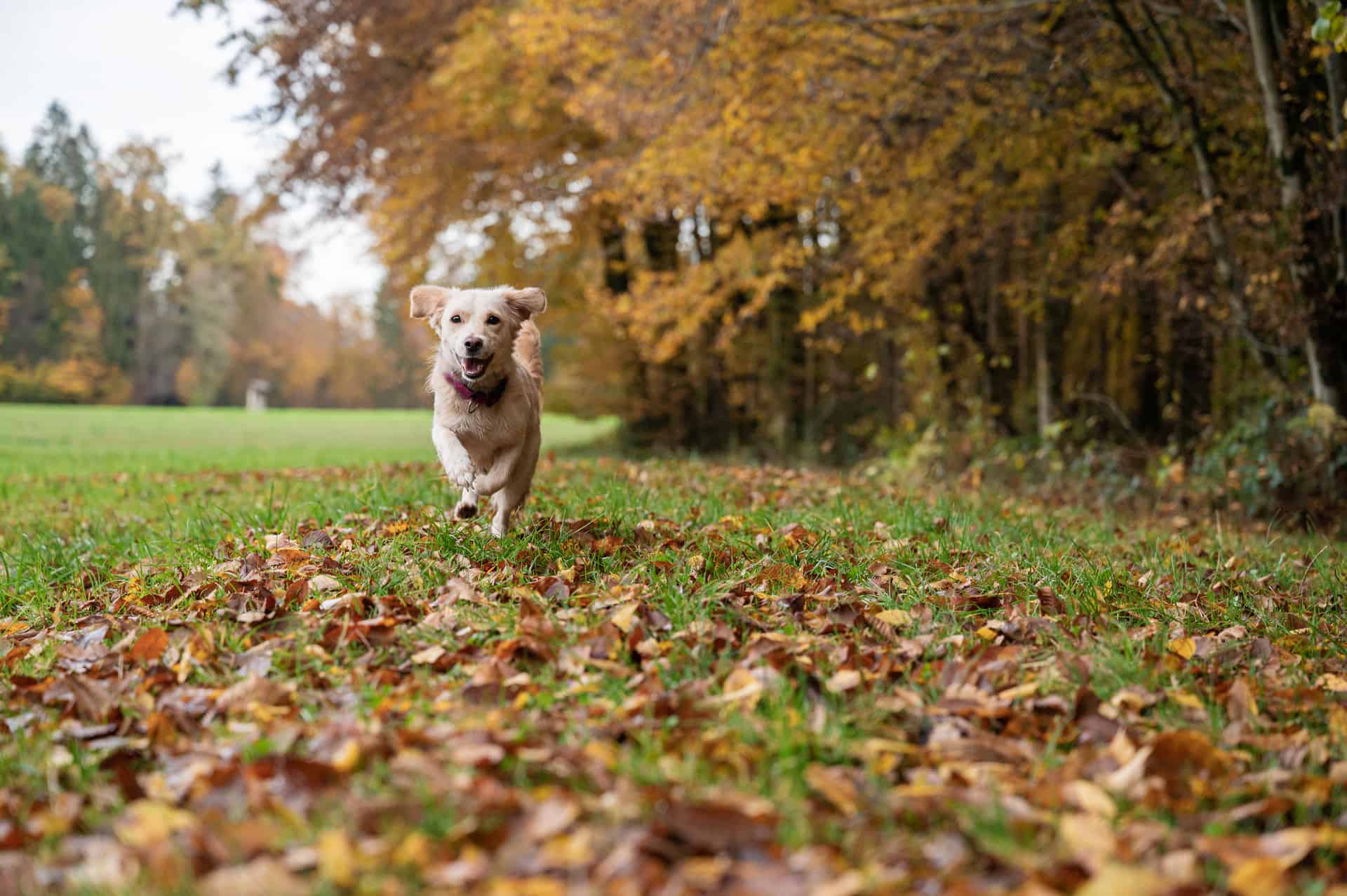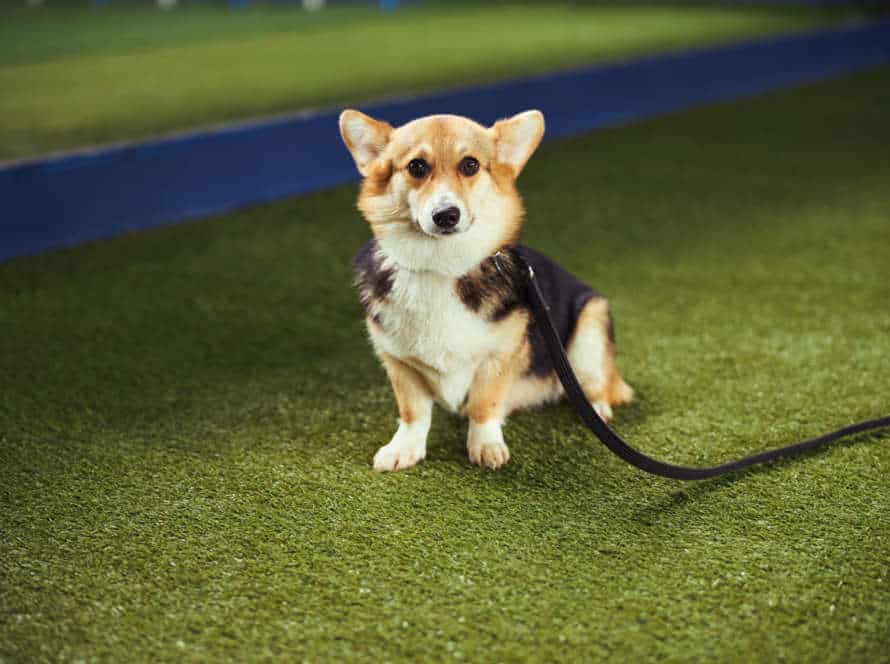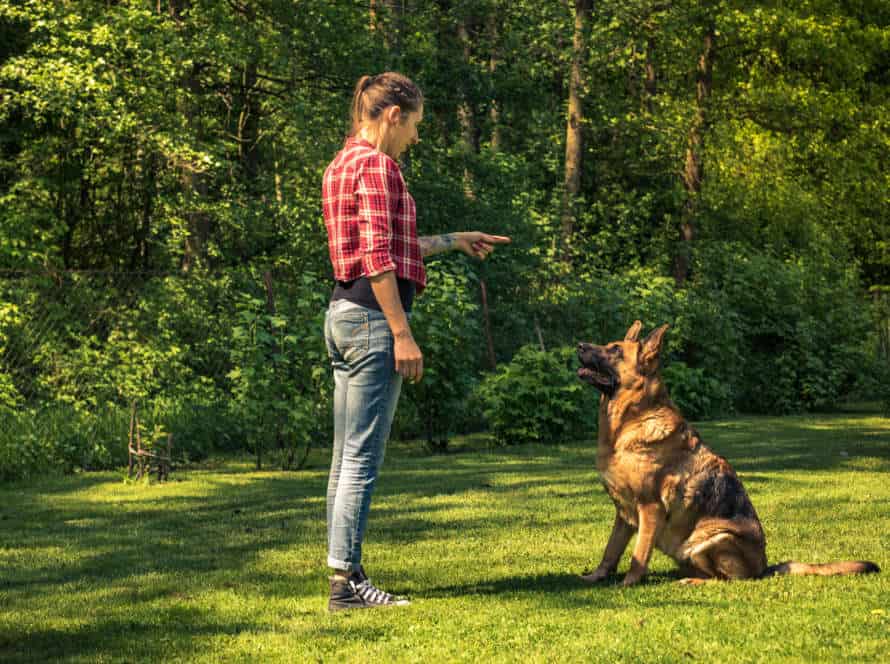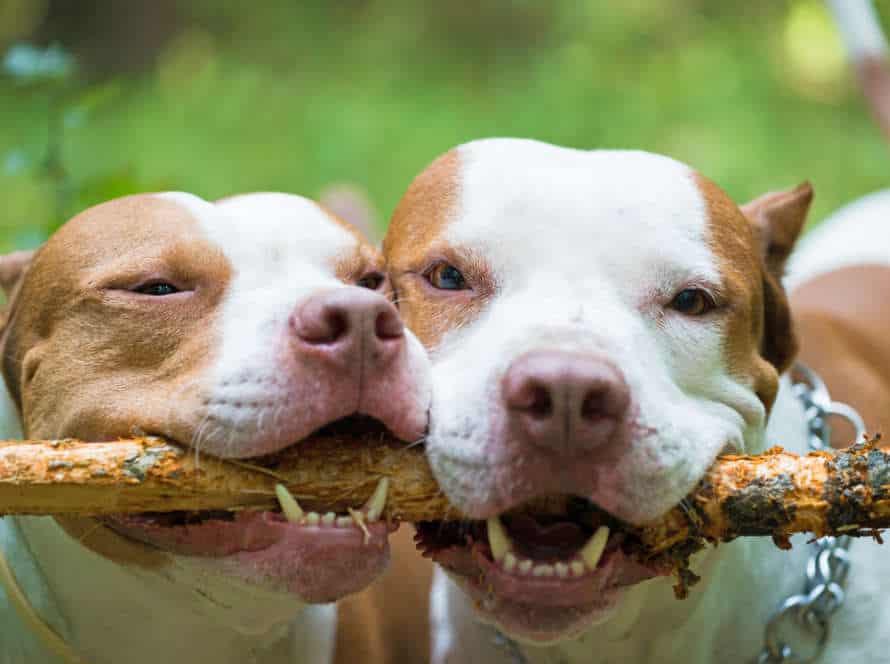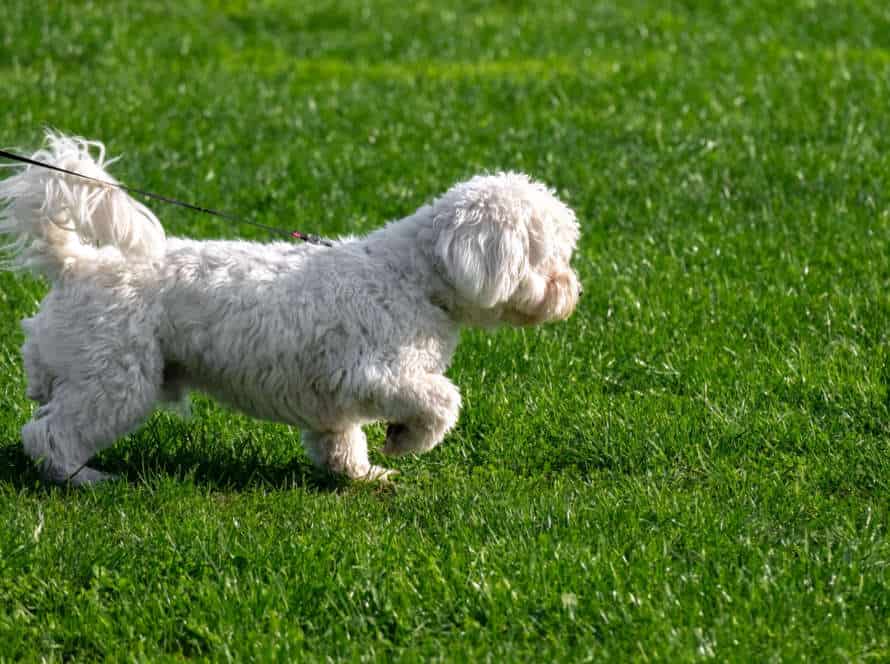Overcoming Distractions: Training Your Dog to Come in Any Environment
Training your pup to ‘come’ in any setting can be tricky. But with a few tricks, you can conquer distractions. Here’s how:
- Begin by practising in a low distraction environment, such as inside or in a fenced-in area.
- Reward your pup’s response to the “come” command with a tasty treat or toy.
- Slowly increase the level of distraction by practising in busier places or noisier areas.
- Avoid punishing your pup for not obeying ‘come’. This can spark fear and mistrust.
- Instead, use positive reinforcement to reward your pup for good behaviour. Train your pup consistently to reinforce good habits.
- By following these tips, you can teach your pup to come in any environment – no matter how many distractions there are.
Understanding the Challenges
Training your pooch to come in any atmosphere can be tough. Grasping the issues and struggles that can appear when teaching your dog this essential skill is vital. Here, we’ll analyze typical interruptions that may block your pup’s understanding and tell you how to design a useful training plan to beat these difficulties.
Different types of distractions
Training your dog to come when called can be a challenge due to distractions. Here are some common types:
- Visual: People, animals or objects that draw your dog away.
- Sound: Loud or sudden noises like car horns, fireworks or thunder.
- Environmental: Changes like a new location or weather.
- Internal: Hunger, anxiety or excitement.
To prepare for successful training, start in a low-stimulus environment and add distractions as your dog gains confidence. Pro tip!
Your dog’s mindset in the presence of distractions
It’s essential to grasp your dog’s thought process in chaotic situations. Dogs are naturally inquisitive and react to the environment around them. This response comes instinctively and it can be hard to train them when there’s noise, crowds or madness nearby.
Identify what motivates your pup, whether it be food, play or love. Expose them slowly to more and more distraction, providing positive reinforcement to keep them interested.
Utilize a long leash to maintain control while allowing them some freedom. Do recall drills regularly in multiple spaces. When they come back, be sure to reward them to form a good connection. With patience, consistency and hard work, you can teach them to obey even when there are distractions.
Behavioral tendencies to be addressed
Training a pup can be hard work. Identify and tackle specific behaviors for better results in any situation. Some behaviors to tackle:
- High prey drive: Dogs with a high prey drive might get distracted by birds, squirrels, or other small creatures. Train in a fenced area or use a long leash for focus.
- Lack of focus? Short, frequent seshes with treats or toys as rewards can help.
- Fearfulness? Patience and lots of positive reinforcement go a long way.
- Separation anxiety? Gradual, positive experiences of being apart will help them stay focused and secure.
Pro Tip: Consistent, positive training is key! Be patient and understanding – use rewards to encourage success.
Setting the Groundwork
Before teaching your pup to come, create a distraction-free area. Ensure your dog knows basic commands such as ‘sit’ and ‘stay’. Give food rewards for successful recall attempts. After this, start adding distractions to build recall reliability.
Start with basic obedience training
Basic obedience training is key to successful dog training. It helps your pup come when you call, even in distracting settings. Here are some tips:
- Start with “sit” and “stay” before “come”. Get used to simpler commands first.
- Use treats and positive reinforcement. Give a treat, praise, or attention when they obey.
- Practice indoors first. Call them from room to room before outside.
- Increase difficulty gradually. Move to noisier and less familiar environments.
Remember, obedience training builds your pup’s confidence and makes them more likely to respond to your commands. Pro tip: Use your pup’s name instead of “come”. It’s more personal and effective.
Master the “come” command indoors
Mastering the “come” command indoors is essential for training your pup. To set the foundation for success, you must overcome distractions. Here are the steps:
- Establish a clear, consistent “come” command.
- Start training indoors with positive reinforcement and treats.
- Increase the distance and add distractions to mimic real-world conditions.
- Practice in various rooms and areas of the house.
- Once your pup has mastered the command indoors, move to a secure, fenced area outdoors.
- Remember to use positive reinforcement, be patient, and never punish.
Pro tip: Be consistent and practice regularly to reinforce the behavior.
Use positive reinforcement training
Positive reinforcement is a good and gentle way to teach your pup. Here’s how to start:
- Begin in a quiet, comfy place and add distractions gradually.
- Give your dog a yummy snack or favorite toy when they come to you.
- Use an upbeat and cheerful voice when you call them.
- Reward ’em with the treat or toy right away when they come.
- Be consistent and don’t punish if they don’t come.
With time and repetition, your pooch will come to you even in the busiest places. Extra tip: Make training enjoyable with play and treats!
Gradually Introducing Distractions
Introducing distractions to your pup is key when teaching them to come. Distractions can be hard for your dog to ignore, so try using certain methods. In this part, we will discuss the best ways to include distractions while training your pup to come.
Create controlled environments that simulate distractions
Training a pup to obey your command can be tricky, especially when there are distractions. A great solution is to make controlled settings which imitate distractions and introduce them to your dog bit by bit. Here’s how you can do it:
- Figure out which distractions your pup could face, like other furry friends, people, or loud noises.
- Begin training them in a soothing and familiar area with no distractions.
- Introduce one distraction at a time, like someone strolling by, and train your pup to come on command while that distraction is present.
- Gradually make it harder by adding more distractions and changing the environment, such as a park or a crowded street.
- Use positive reinforcement tactics, like treats and compliments, to reward your pup for coming on command even with the distractions.
With consistent training and patience, your pup will learn to come on command even in hard environments.
Introduce mild distractions
To train your pup to come in any situation, you need to add mild distractions gradually. Too much all at once can cause them to lose focus, blocking progress. Here are some tips:
- Start with something low-key, like a toy or snack on the ground.
- Increase the intensity of the distraction as they get used to it.
- Give rewards for staying focused and coming to you.
- Practice in various places, with escalating levels of distraction.
- Remember: consistency is key. Train regularly and stay positive!
Gradually increase the level of distractions
Training a dog to come? Important to increase distractions, as they learn. Here’s tips to help you!
- Start in quiet, low-distraction environment. Minimal smells and noises.
- Gradually add more distractions. Toys, treats, people, animals, noise.
- Increase one distraction. Repeat exercises till dog obeying command.
- Struggles with certain distractions? Take step back, practice lower levels.
- Move forward when improvement. Reward dog for obeying commands.
Remain positive, patient in training!
Training in the Real World
Do you want your pup to obey? Take ’em out! Train ’em in the real world. There are plenty of distractions to cause unruliness. Other animals, people and more.
To train properly, it’s essential to be successful in obedience. Here’s the best way: Train your doggo outside the house. Make sure they come no matter the situation.
Start with low-distraction areas
Training your pup to come in any location? Start with low distraction areas. Gradually, boost the level of distractions as your pup gains proficiency with the command. Here are tips to help:
- Begin with a peaceful and quiet setting, like your backyard. Then proceed to more distracting environments.
- Use a long training leash, so your pup can still have freedom while you retain control and prevent them from running away.
- Focus your pup’s attention on you before you give the “come” command.
- Reward your pup with treats and praise when they come when summoned.
- Increase the level of distractions by training in more challenging settings, like a park or a busy street.
- Be patient and consistent with your training and always prioritize your pup’s safety.
Use a long leash or fence to prevent running away
-
A long leash or fence can be useful for training your pup to come. Here’s how:
-
First, connect the leash to their collar. Not too tight, not too loose.
-
Second, call them with a cue word like “come.” Be enthusiastic!
-
Third, if they run to you, reward them with praise or treats.
-
Fourth, if they don’t come, give the leash a gentle tug.
-
Fifth, practice often. Increase the distance between you and your pup each time.
-
Sixth, eventually you’ll be able to rely on them to come regardless of distractions.
Practice in a variety of environments
It is essential to practice in various environments, so your pup can obey the ‘come’ command regardless of the distractions of the real world.
Here are some tips on how to train your pup to come in different settings:
- Start small – begin with training in your backyard or in a tranquil, familiar park without too many distractions.
- Gradually introduce new environments – once your pup has mastered the basics, move on to slightly more distracting and unfamiliar places such as bustling parks or close to roads.
- Use positive reinforcement – reward your pup with goodies and positive praise each time they follow the ‘come’ command.
- Keep sessions brief – keep training sessions fun and short, so as to not overwhelm your pup with new environments and distractions.
- Practice regularly – practice often in various settings to reinforce the behavior, so your pup will remember the commands even in new situations.
With patience and consistent training, your furry friend will learn to come on command, wherever they may be!
Addressing Common Issues
Calling your pup back can be tricky. Yet, it’s achievable! Before you begin teaching in any circumstance, it’s key to get familiar with the common problems that could come up. Let’s delve into a few of the most recurrent difficulties and how to cope with them.
Your dog ignores the “come” command
Frustrating and sometimes dangerous, it can be if your pup ignores your “come” command. Consistent and positive training is what you need to teach them to come to you, no matter the environment or distractions. Here’s a few tips to help:
- Begin inside with no distractions, then move outside and add more distractions.
- Use a happy voice when calling your dog.
- Praise and reward when they arrive, even if it takes a while.
- No punishment or negative reinforcement if they don’t come.
- Motivate them with treats, toys or rewards.
- Practice the command daily in different environments and situations.
With patience and consistency, your pup will respond to your call every time, no matter the situation.
Pro Tip: Take high value treats with you, especially in busy places, to reward your pup for coming.
Your dog only comes when he/she feels like it
It’s hard to train your pooch to come when you call them. Especially when there are lots of distractions. So here are some tips for success!
- To start, practice in a quiet place with no distractions.
- Use yummy treats like meat and cheese to reward your pup.
- Keep practicing and make it harder, adding more distractions and increasing the distance.
- A harness or long-line can be used to stop them from running away.
With patience, you can teach your dog to come when called, no matter where you are!
Your dog runs away when he/she is outside
Many dog owners struggle with their pup running away when outside. To correct this, train your pet to come when called. Here’s how:
- Begin in a peaceful and familiar place with few distractions.
- Reward your dog with something they like, such as treats or praise, whenever they respond to your call.
- Slowly increase the level of disturbances like saying their name while they are playing or exploring.
- Include recall training in your pup’s daily life – call them before meals or when taking them for a walk.
- Keep the training fun and short, and end on a good note.
Pro Tip: Be consistent! Use the same commands and reward system, and stay dedicated to the training even if it gets tough.
Advanced Training Techniques
Your pup must understand that coming when called is desirable – even with distractions! To do this, you need advanced techniques and lots of repetition. Here’s some info on how to help your dog obey in any environment.
Create distance and recall commands
Creating distance and recall commands are essential for advanced training. They help your dog come when called, no matter the distractions.
To create a recall command:
- Choose a sound or word that your pup will recognize.
- Reward them with treats and praise when they come.
- Practice in a quiet place before progressing.
To create distance commands:
- Use visual and verbal cues to direct them away.
- Reward them when they respond to the cue.
- Increase the distance gradually.
Pro tip: Be patient and persistent when training. Regular practice reinforces the commands and strengthens the bond with your pup.
Use a unique whistle or sound cue
Train your dog to come on a special whistle or sound with these steps!
- Choose a sound that’s not heard in everyday life.
- Link the sound with something positive – treats or their favorite toy, for example.
- Practise the sound in a low-distraction environment.
- Whenever your pup hears it, reward them with treats or praise.
- Raise the difficulty level by training in different places and with other people and dogs.
- Keep rewarding your dog every time they come on the signal, even if they’re distracted.
Top tip: Be consistent. Use the same signal each time and keep rewarding positively.
Teach your dog to check in periodically
Teaching your pup to check in? It’s key! This technique is known as “check-in” command.
Select a spot for your pup to check-in. It can be a mat or place in the room.
Leash the dog and walk them over to the spot.
Say “check-in” and give a treat when they reach it.
Praise them too!
Keep repeating. Increase the distance between you and the spot.
With consistent repetition, your pup will learn to check-in regularly. This makes them pay attention and focus better in any environment.
Maintenance and Reinforcement
Maintaining and reinforcing are essential for your dog to remember to come when you call. Maintenance is about reminding and training them to come every time. Reinforcement is rewarding them when they respond. This section focuses on the importance of these two elements when teaching your pup to come in any situation.
Continue to practice regularly
Regular practice is essential. It helps maintain and reinforce your dog’s training. Especially when teaching them to come in any environment.
Consistency is key. It’ll help your dog understand expectations and reinforce habits. These are useful in different environments.
Set aside a daily routine. Practice your dog’s recall in different locations. Vary the levels of distraction.
Always provide positive reinforcement when they follow commands. Reprimand as needed when they don’t.
Put in the work to practice and reinforce your dog’s training. Be confident that they’ll come when called, even in distracting environments.
Pro Tip: For added reinforcement, use a long leash. Give your dog more freedom. Still control their movements during training.
Reinforce good behavior with rewards
Reinforcing good behavior in your pup is simple with rewards! Give them something yummy, like a small treat. And don’t forget to praise them and give them a pat or belly rub too.
Be consistent with rewards and their timing to help the pup learn. Gradually reduce the frequency of rewards as the pup gets better at following the behavior.
Training takes patience and persistence, so don’t get discouraged if it takes some time. With positive reinforcement, your furry friend will come when called no matter the environment.
Address and correct undesirable behavior promptly
As a dog owner, it’s vital to handle bad behavior right away. That way you can train your pup with ease. Here are some tips to help:
- Positive reinforcement: Give them treats or compliments when they come when called.
- Reduce distractions: Train them in a quiet, familiar spot first.
- Correct correctly and carefully: Use a strong yet calm voice and point their attention to the behavior you want.
- Be consistent: Train them daily and use the same commands each time.
By dealing with bad behavior immediately, reinforcing good behavior and practicing consistently, you can get your pup to come in any environment.
Frequently Asked Questions
Q: Why is training a dog to come when called important?
A: Training a dog to come when called is important because it can potentially save their life. It also makes for better behavior overall and can improve your bond with your furry friend.
Q: How can I overcome distractions when training my dog to come?
A: Start in a quiet, low-distraction environment and gradually increase the distractions. Use positive reinforcement and rewards to encourage good behavior.
Q: What type of rewards should I use when training my dog to come?
A: Use high value treats that your dog loves, such as small pieces of chicken or cheese. You can also use toys or praise as a reward.
Q: Can I train an older dog to come when called?
A: Yes, you can. It may take longer than training a puppy, but with patience and consistency, you can teach an older dog new tricks.
Q: What should I do if my dog doesn’t come when called?
A: Don’t punish your dog. Instead, go to them and gently lead them back to where you called them from. Then, work on reinforcing the command with positive rewards.
Q: How long does it take to train a dog to come when called?
A: The training time can vary depending on the dog and their level of distraction. It can take anywhere from a few weeks to several months of consistent training to see a reliable response.

